A year ago, I asked about properly triangulating a periodic shape on a plane: the annulus (Getting a proper Delaunay triangulation of an annulus (using python)).
I now want to expand this to triangulating a cylinder (or in general, any periodic surface). I try a straightforward extension of the 2D code:
from scipy.spatial import Delaunay
NZ = 14
NTheta = 14
R = 1 #radius of cylinder
L = 3 #length of cylinder
#define base rectangle (u,v)
u=np.linspace(0, 2*np.pi, NTheta) #periodic direction
v=np.linspace(0, L, NZ)
# u=u[:-1] #leave out one point
u,v=np.meshgrid(u,v)
u=u.flatten()
v=v.flatten()
#evaluate the parameterization at the flattened u and v
x=R*np.cos(u)
y=R*np.sin(u)
z=v
#define 2D points, as input data for the Delaunay triangulation of U
points2D=np.vstack([u,v]).T
tri = Delaunay(points2D, incremental=True)#triangulate the rectangle U
triSimplices = tri.simplices
xyz0 = np.vstack([x,y,z]).T
I create a cylinder via parameterisation, and obtain the triangulation via scipy.spatial.Delaunay() of the base domain -- the rectangle. Obviously, this triangulation does not know about the periodicity. I can see this clearly by moving the last row, and plotting:

To correct this, I try a straightforward extension of the 2D solution-- I add an extra point in 3D, re-triangulate and remove the unwanted simplices.
Tri1 = Delaunay(points2D) #triangulate the rectangle U
Tri2 = Delaunay(xyz0)
## we add a central (0,0,L/2) point to xy0 to fill it up with triangles
last_pt = xyz0.shape[0]
xy1 = np.vstack((xyz0,(0,0,L/2))) # add ctr point
Tri3 = Delaunay(xyz1)
print(Tri3.points.shape, Tri3.simplices.shape)
print(Tri1.points.shape, Tri1.simplices.shape)
print(Tri2.points.shape, Tri2.simplices.shape)
## remove the simplices that contain the central point
mask = ~(Tri3.simplices==last_pt).any(axis=1)
triSimplices = Tri3.simplices[mask,:]
However, the extension of the 2D code to 3D seems to have a big problem -- triangulations in 3D give tetrahedra, not triangles! Moreover, it seems to be more sensitive to the choice of the central point. In short, I am stuck.
So, what is the proper way of triangulating such a periodic surface?
